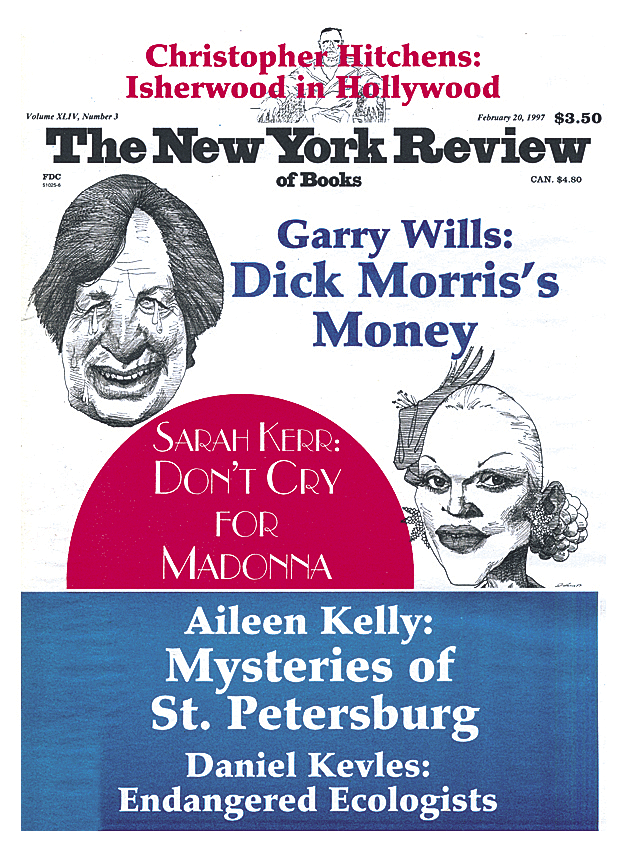In response to:
On Drawing: An Exchange from the January 9, 1997 issue
To the Editors:
Regarding James Fenton’s reply in the exchange on drawing [NYR, January 9]: One knows that drawings were often neglected by the artists themselves. The fact that no drawings by Velázquez are mentioned in both post-mortem inventories dressed up by Francisco de Rojas (August 10, 1660) and Gaspar de Fuensalida (August 29, 1660) is disturbing. But a drawing of the quality of the Cardinal Borja portrait, (on the level of Van Eyck) could not possibly be a unicum. I personally don’t believe in the so-called “studies for the Surrender of Breda.” A drawing is like a letter—the handwriting is immediately recognizable like a letter. This is the case with drawings other than the Borja one, attributions which come up from time to time.
Drawing is the core of art, and although Caravaggio or Velázquez gave priority to painting, how could they have painted a hand, a foot, a face so marvelously, without being able to draw in the first place? But Marcel Duchamp ironized it and said: “You take a painting by Rembrandt and instead of looking at it, you use it plainly as an ironing board.”* The question is now whether you can turn an ironing board into a Rembrandt.
Avigdor Arikha
Paris, France
This Issue
February 20, 1997
-
*
Marcel Duchamp, interview with George Heard Hamilton, BBC Radio Third Programme, November 13, 1959. ↩


